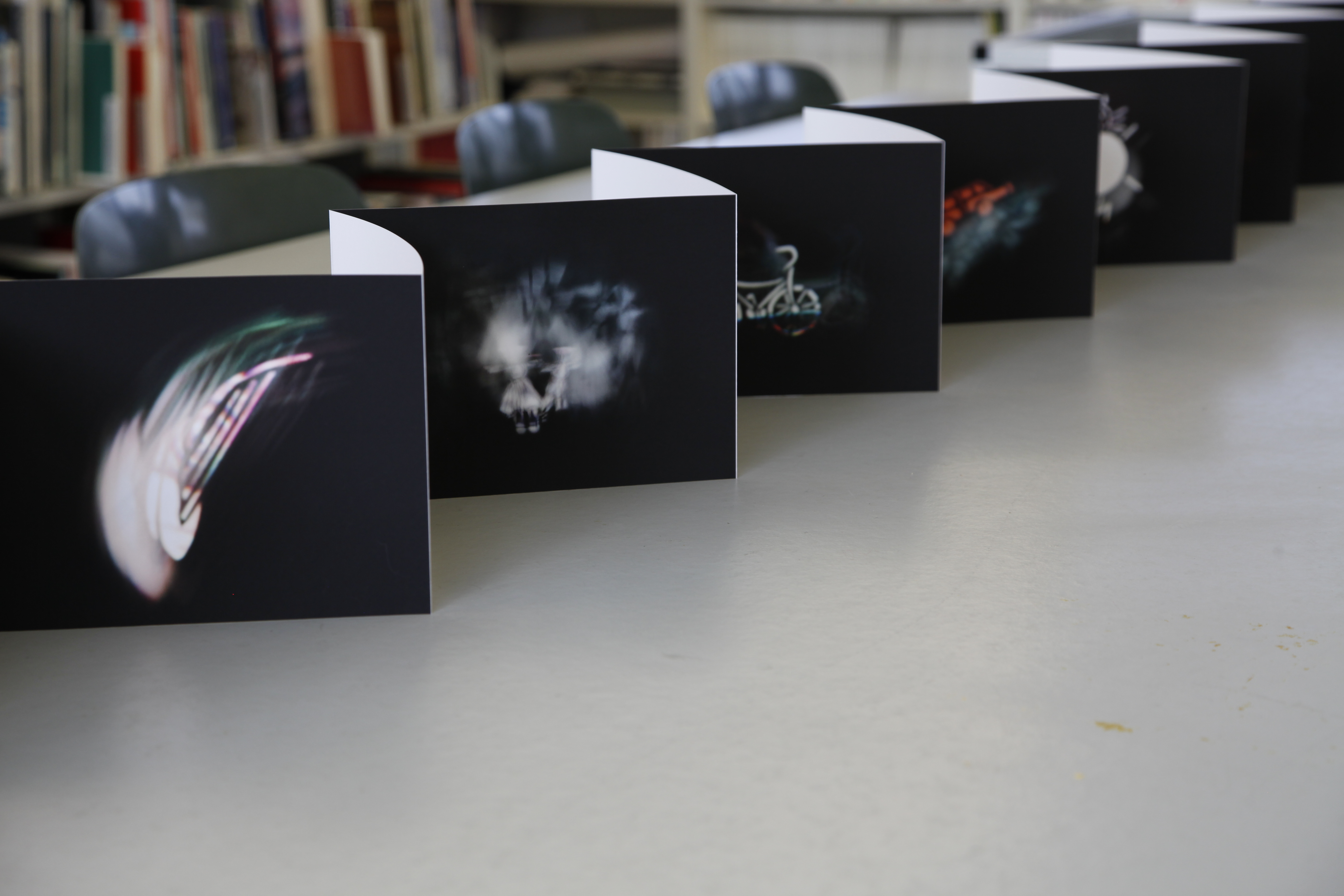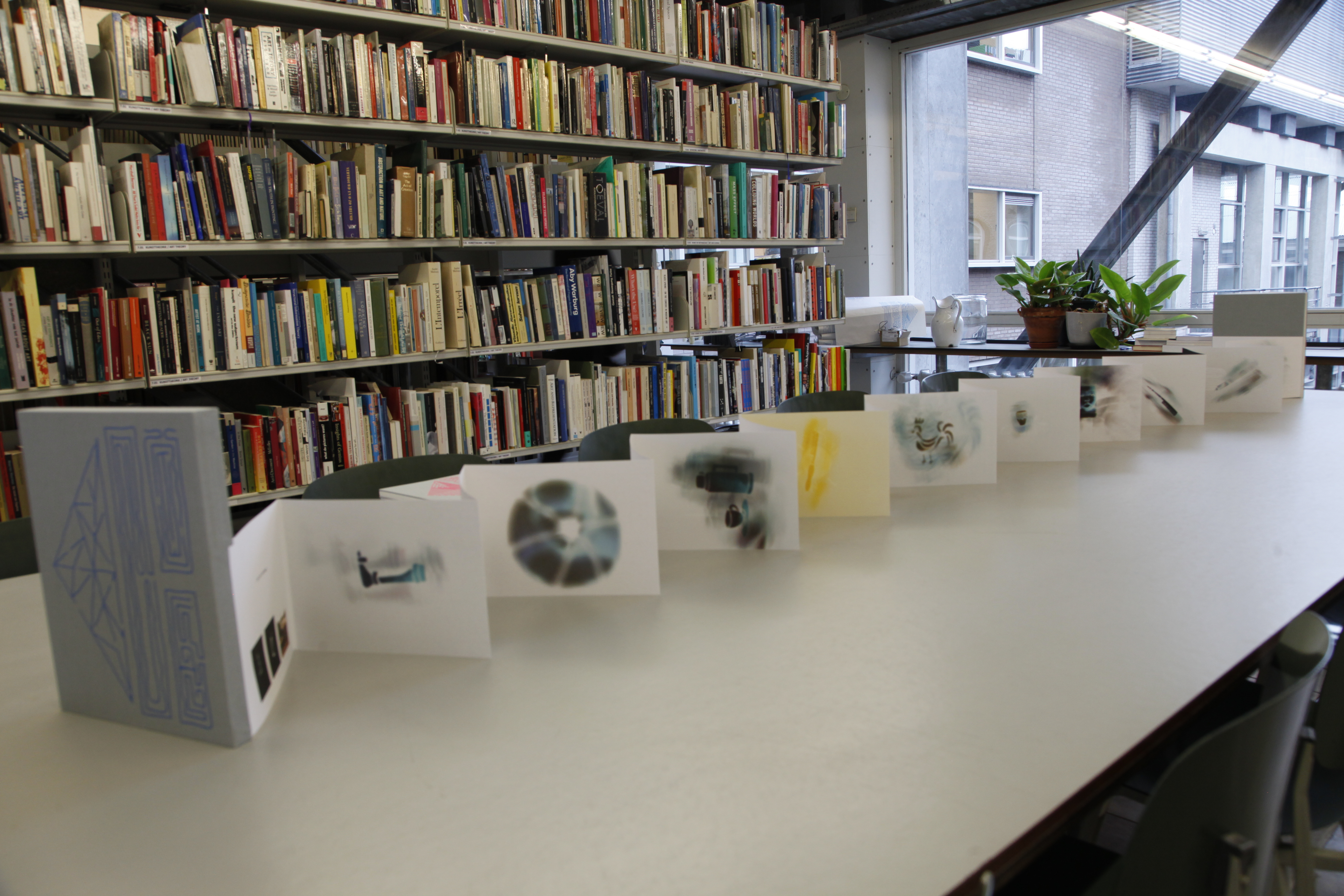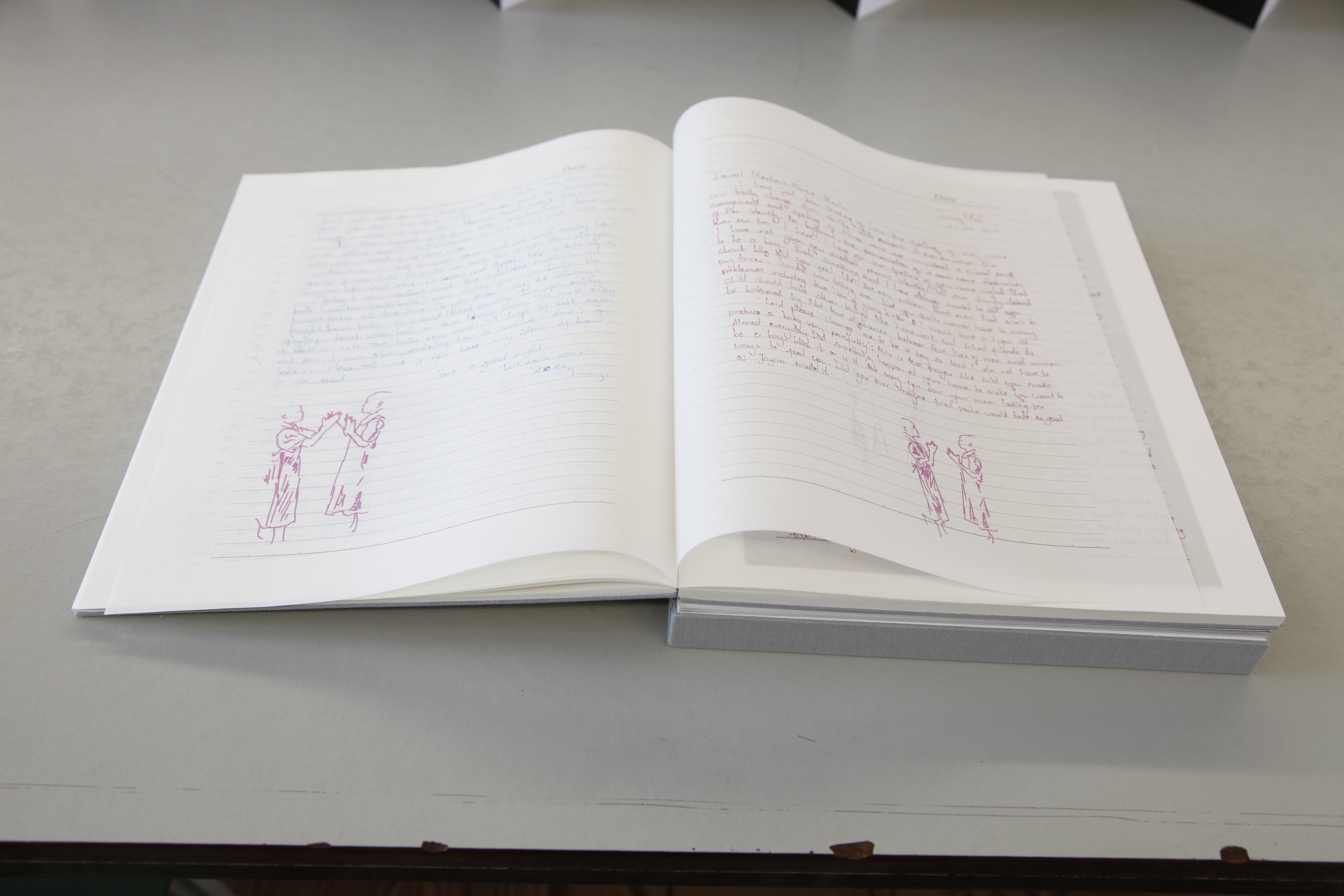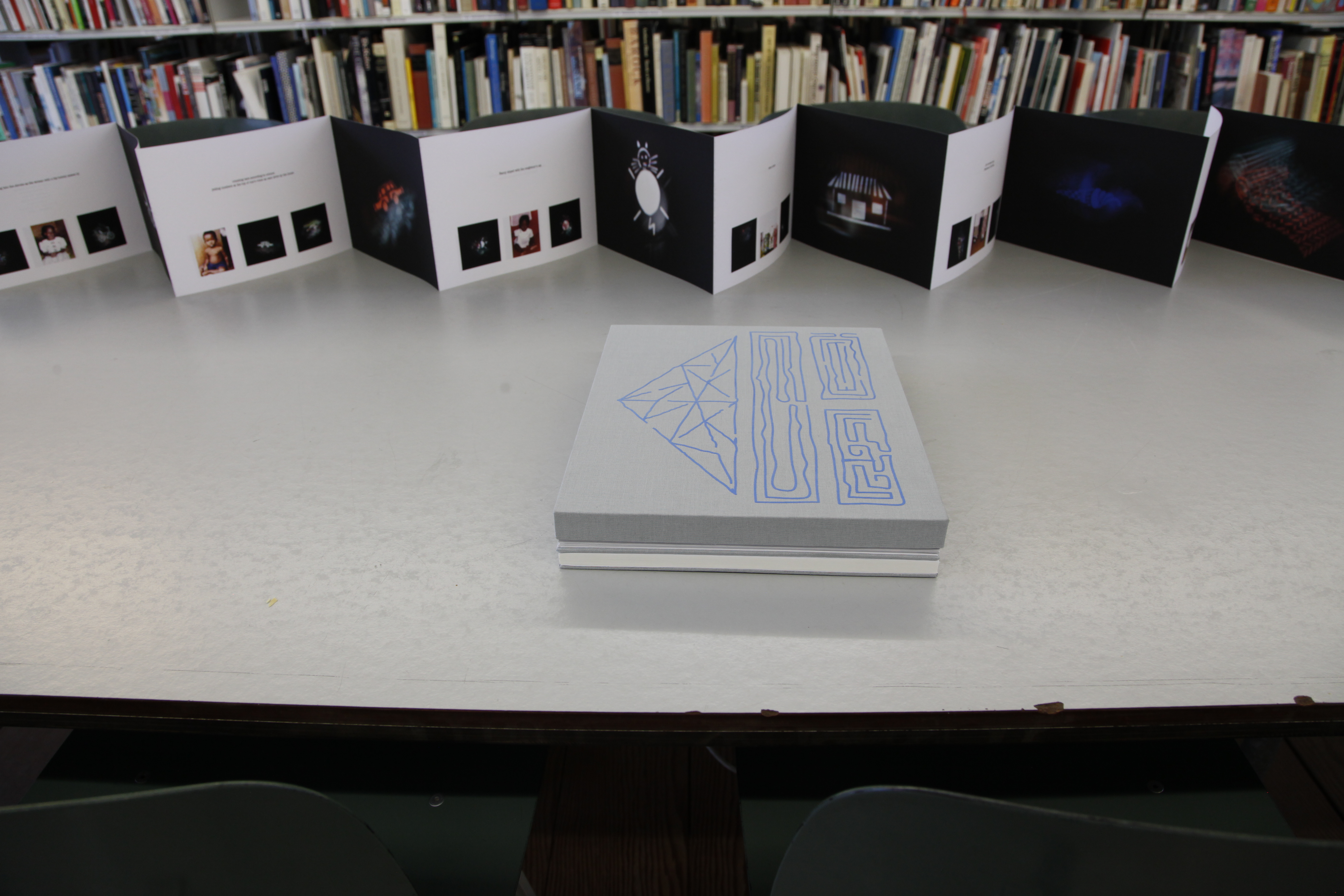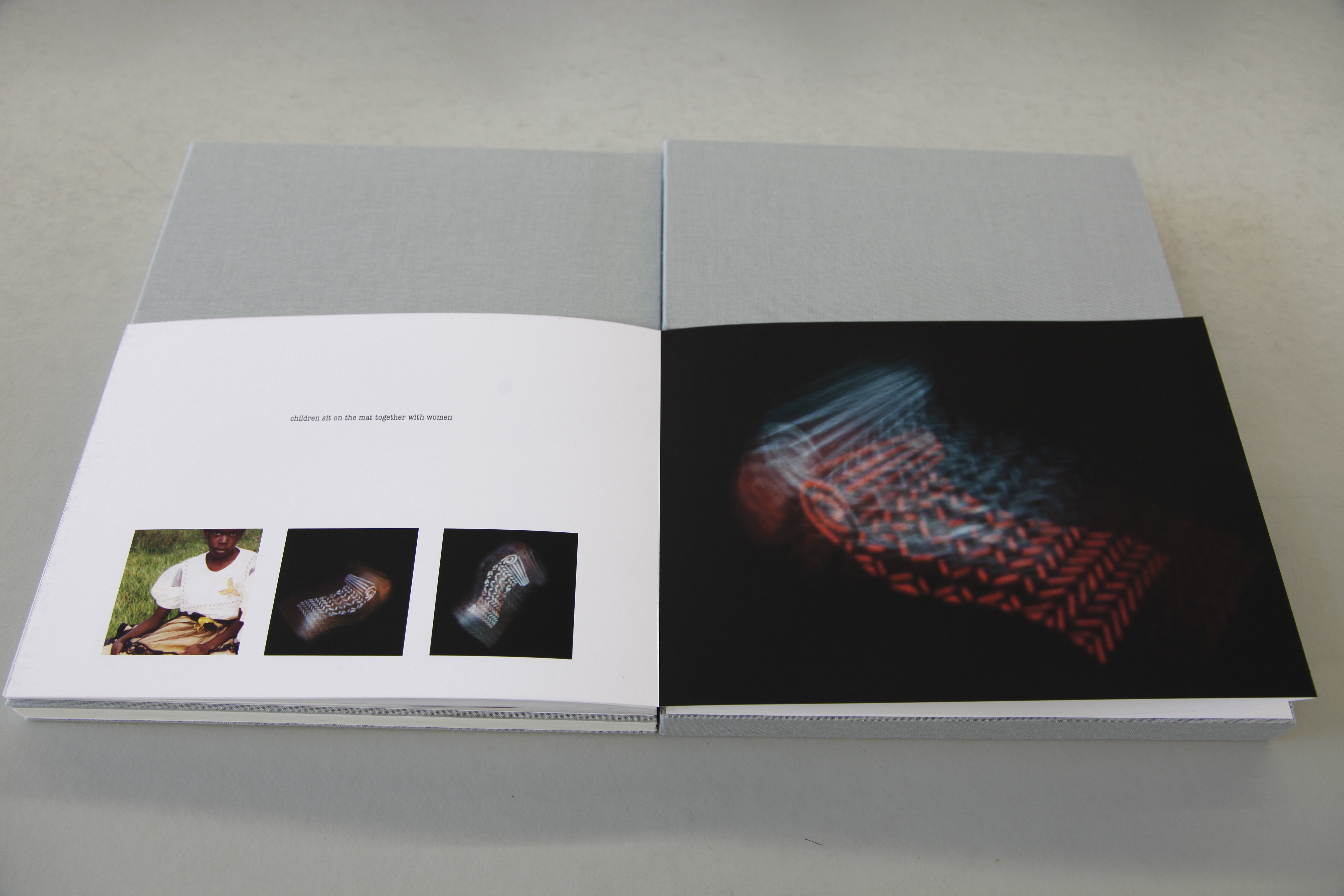(A compilation of letters to my childhood 2017-2019)
2019, Mixed media artist book.
Characteristics of the book/sound art,
The book is made of 5 parts all together.
Dimensions
23.5 x 29 x 4.4 cm
Accordion (picture pages) is 4.7 m long when un folded.
i. The silkscreen print on linen cover. A Kasonko pattern divided in segments is printed on the front cover and back cover of the book. Kasonko is the name of a game I habitually played as a child growing up in playgrounds in the east and central regions of Uganda. The game was/is commonly played by girls. It focuses on physical balance, competitiveness, strategy and has land ownership, building houses and owning territories as the goal in the game – these are a measure of stability, wealth or power within most Ugandan communities. It is a mirror of society played out by 5-12 year olds (mostly girls) and occasionally teenagers of up to 14 yrs of age.
Photo credit: Immy Mali
Description of the game
Using a piece of charcoal or twig, a wide block is drawn on the bare ground and a pattern made of rectangles and triangles is drawn into it. Each of the first 7 segments within the block represents a class in primary school (P.1 to P.7) and the last 2-square/rectangular segments at the end of the block represent secondary school classes 1 and 2.
1. After the game has been drawn, each participant (between 2-10 children or more) chooses a pebble, piece of broken tile or any small, semi flat and reasonably stable object.
2. The first player throws the pebble in the first rectangle.
3. The player then hops (on one foot) from segment to segment avoiding the area where the pebble has been thrown.
4. The player hops until they have scaled all the segments. They turn back still on one foot, and hop all the way back, pick up the pebble without setting foot in the segment where they had the pebble and then hop out of the entire block.
5. They then throw the pebble in the next segment and repeat the same procedure as previously described. Each time avoiding the segment which presently contains the pebble. This carries on until all the segments have been played through.
6. The player then proceeds to buy land and build a house. At this stage the player stands outside the edge of the block, turns his back towards the game, squats or kneels and then throws the pebble or stone over her/his head. The aim is for the stone to land in one of the segments.
7. If the player manages to throw it in a segment, they continue to play as before and when they get to the segment with their pebble, they can step in the space with both legs and draw a desired pattern of their choice to mark their territory. This drawing process is also a representative action of buying land and building a house.
8. As the players advance in the game, if lucky or tactful enough, they acquire more land and build houses and become more competitive. The acquired land and built houses are shaded/patterned off and exclusively only accessible by the owner unless she/he gives permission to another player to go through her/his territory.
9. Players of the game are also prone to commit any one of the following fouls which can set them back in the competition for property:
Stepping on a line in the pattern as they hop.
Throwing the pebble in the wrong section or outside the block
Hopping into an area that they aren’t supposed to hop into.
Throwing the pebble into another’s land/territory/house
Stepping in another’s territory without permission
This subjects the players to take turns as they play.
Taking from the design of Kasonko, I have created a labyrinth that I envision as a place, which holds most of my childhood memories between the ages of 5-12 years of age and early teenage years. The labyrinth is inspired by the drawing of house patterns in the process of playing Kasonko. Since Kasonko is a constant game that I played for most of my childhood, I consider it to be a space that holds most of my childhood memories.
ii. The letters and slow flip book animation.
(220pages of prints of the hand written letters (Letters to my Childhood 2017-2019) on IBO one bible paper)
At the end of February 2017, I started writing to Marcue. To my younger self between the ages of approximately five (or less) and twelve years of age in the project Letters to my Childhood (2017-present). A journey that started as images of events from childhood times started to manifest in my work. Daddy Can I Play?! (2013) – A children’s playground made of objects, which a child would not be allowed to play with. A déjà vu of sorts relating to child seduction of play countered by the adult obligation of safeguarding children. These letters have become a way of revisiting childhood events juxtaposed with experiences of my current existence. The 66 letters focus on: the recreations/fictions of remembrance; notions of presence and absence; and the psychological drama of an artist striving to archive their being.
iii. Slow flip book animation.
The animation By shoe I love you baby is made of illustrations of 2 girls who are playing a clapping game through out the book. One of the girls disappears as the game advances leaving the other to continue playing with space. The 2nd girl also eventually disappears towards the end. The illustrations share space with the letters.
iv. Marcue’s photo album/objects of memory. (4.7m scale of paper folded as an accordion)
This segment of the book contains photos of Marcue who I write to. The photos are recreations of blurry childhood images shot through profiles of objects, which trigger childhood memory. Some of the objects include, beach balls, bicycles, cats, ice-cream on corns etc. This is an attempt to create the not so clear image of a person one knows but can not exactly make out features of. Over time, the (long) accordion pages will transfer ink to each other and erase each other or merge to form extremely fuzzy images that may be considered dirty. This is only the active registration of the memory of the book as it is handled from time to time.
v. The sound box. A dysfunctional audio
This is the final part of the book containing sounds of memory. Nursery rhymes, songs from the sound of music, play songs, ice-cream songs, some letters read out and thoughts about childhood, audio books that popped up in the process of sound recording.




